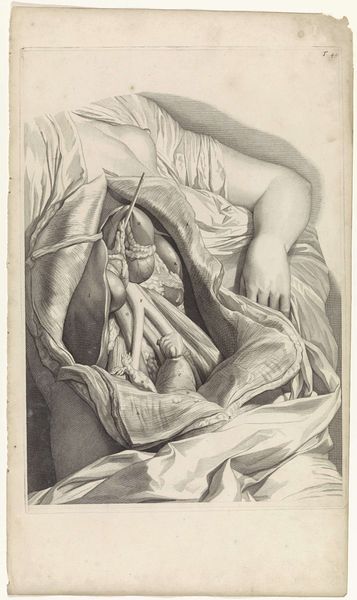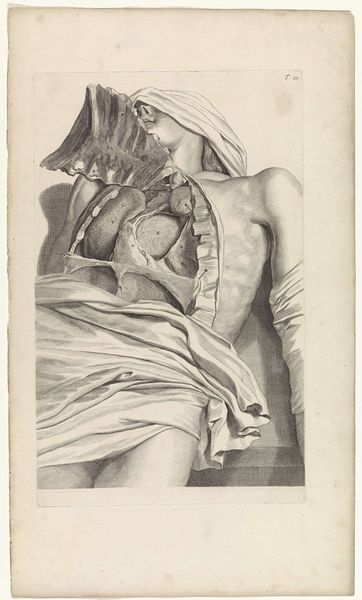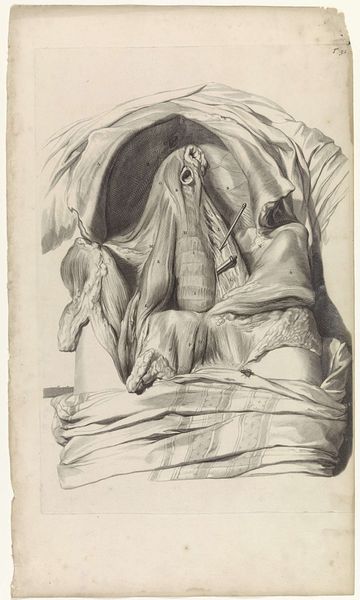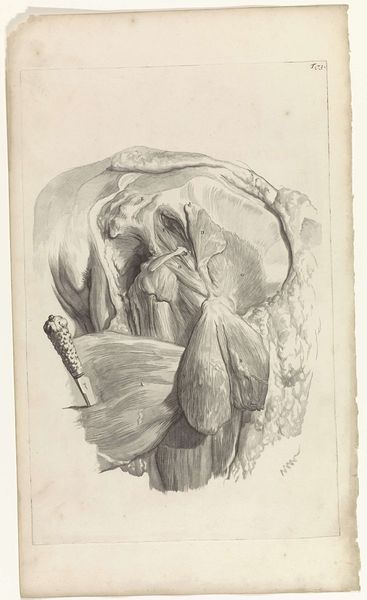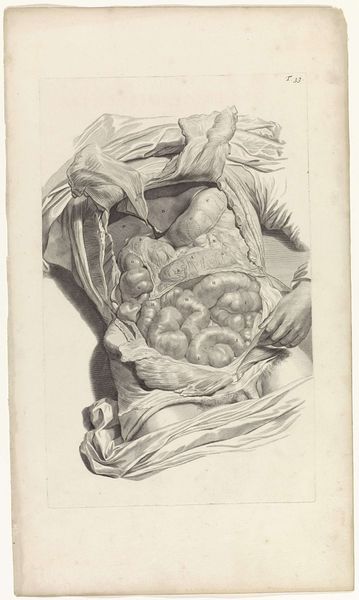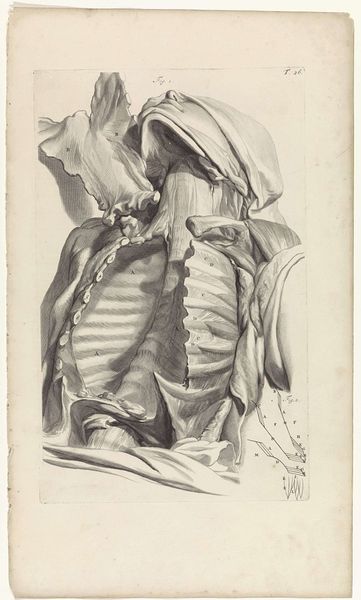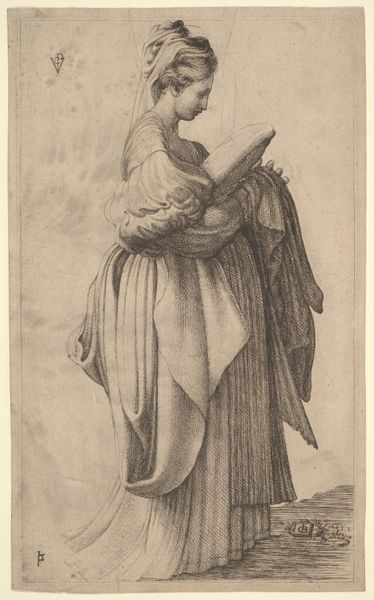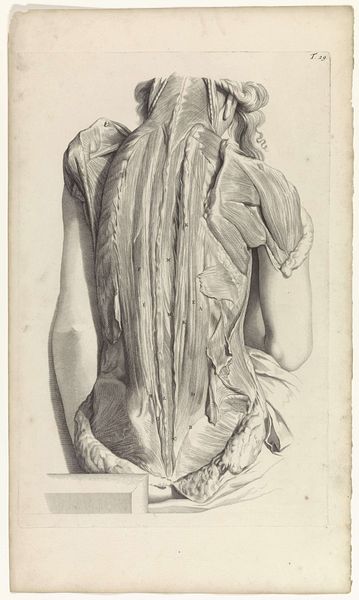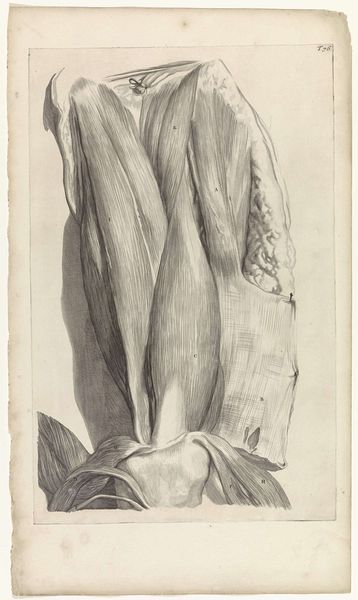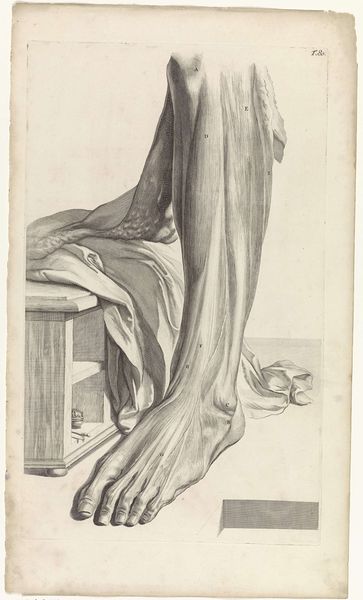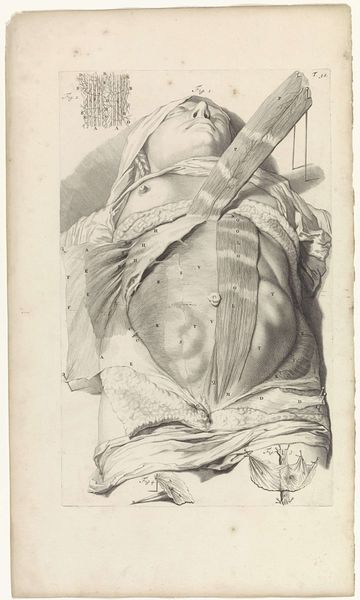
drawing, oil-paint, dry-media, ink, pencil
#
portrait
#
pencil drawn
#
drawing
#
baroque
#
pencil sketch
#
oil-paint
#
figuration
#
11_renaissance
#
dry-media
#
ink
#
pencil drawing
#
pencil
#
history-painting
#
academic-art
Dimensions: width 317 mm, height 482 mm
Copyright: Rijks Museum: Open Domain
This anatomical study of the upper body was made by Pieter van Gunst, using engraving techniques. Look closely, and you can see the extraordinary detail van Gunst achieved. Engraving involves using a tool called a burin to incise lines into a metal plate, which is then inked and printed. The fineness of the lines determines the tone and texture of the image, giving it a crisp, almost photographic quality. This print is not just a feat of technical skill, but also a product of its time. In the 17th and 18th centuries, the rise of scientific inquiry created a demand for accurate visual representations of the human body. Anatomical illustrations were crucial for medical education, and printmakers played a vital role in disseminating knowledge. This print reflects both artistic skill and scientific curiosity, blurring the lines between art, craft, and science. Appreciating the making process helps us see this image not just as a depiction of the body, but as a window into the history of knowledge and representation.
Comments
No comments
Be the first to comment and join the conversation on the ultimate creative platform.
